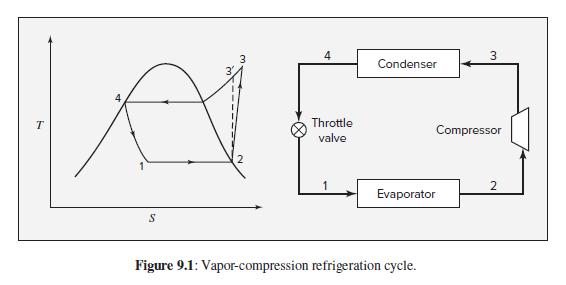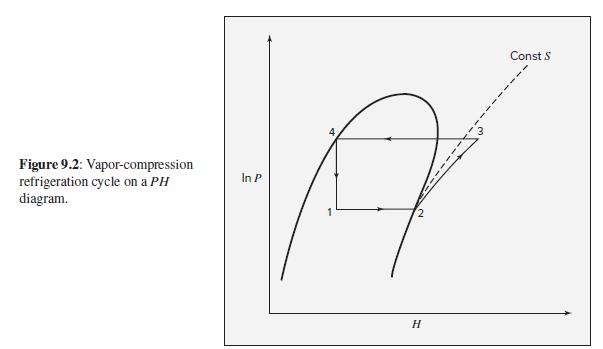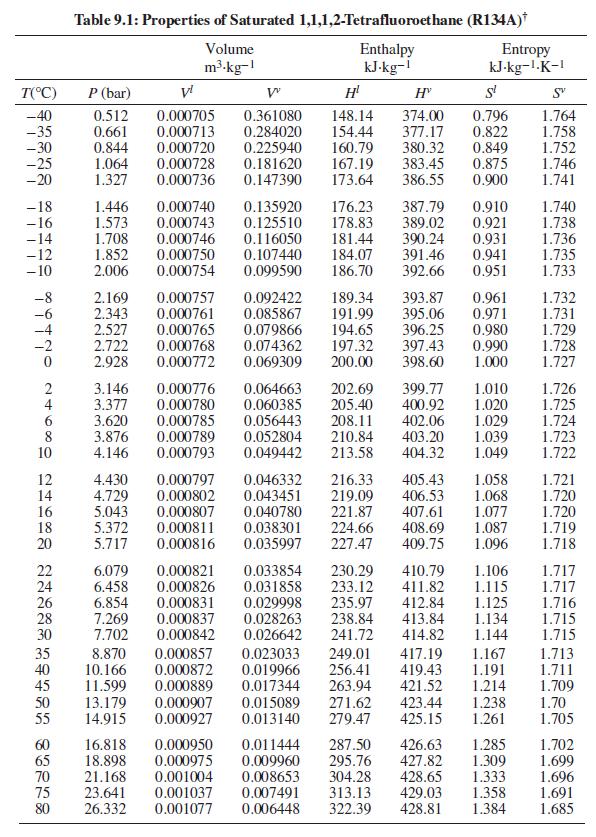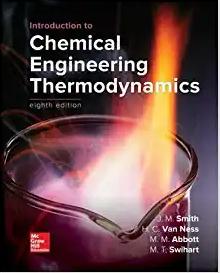Make a thermodynamic analysis of the refrigeration cycle described in one of the parts of Prob. 9.9.
Question:
Make a thermodynamic analysis of the refrigeration cycle described in one of the parts of Prob. 9.9. Assume that the refrigeration effect maintains a heat reservoir at a temperature 5°C above the evaporation temperature and that Tσ is 5°C below the condensation temperature.
Prob. 9.9
A vapor-compression refrigeration system operates on the cycle of Fig. 9.1. The refrigerant is tetrafluoroethane (Table 9.1, Fig. F.2). For one of the following sets of operating conditions, determine the circulation rate of the refrigerant, the heat-transfer rate in the condenser, the power requirement, the coefficient of performance of the cycle, and the coefficient of performance of a Carnot refrigeration cycle operating between the same temperature levels.
(a) Evaporation T = 0°C; condensation T = 26°C; η(compressor) = 0.79; refrigeration rate = 600 kJ·s−1.
(b) Evaporation T = 6°C; condensation T = 26°C; η(compressor) = 0.78; refrigeration rate = 500 kJ·s−1.
(c) Evaporation T = −12°C; condensation T = 26°C; η(compressor) = 0.77; refrigeration rate = 400 kJ·s−1.
(d) Evaporation T = −18°C; condensation T = 26°C; η(compressor) = 0.76; refrigeration rate = 300 kJ·s−1.
(e) Evaporation T = −25°C; condensation T = 26°C; η(compressor) = 0.75; refrigeration rate = 200 kJ·s−1.
Fig. 9.1

Fig. 9.2

Table 9.1

Step by Step Answer:

Introduction To Chemical Engineering Thermodynamics
ISBN: 9781259696527
8th Edition
Authors: J.M. Smith, Hendrick Van Ness, Michael Abbott, Mark Swihart





